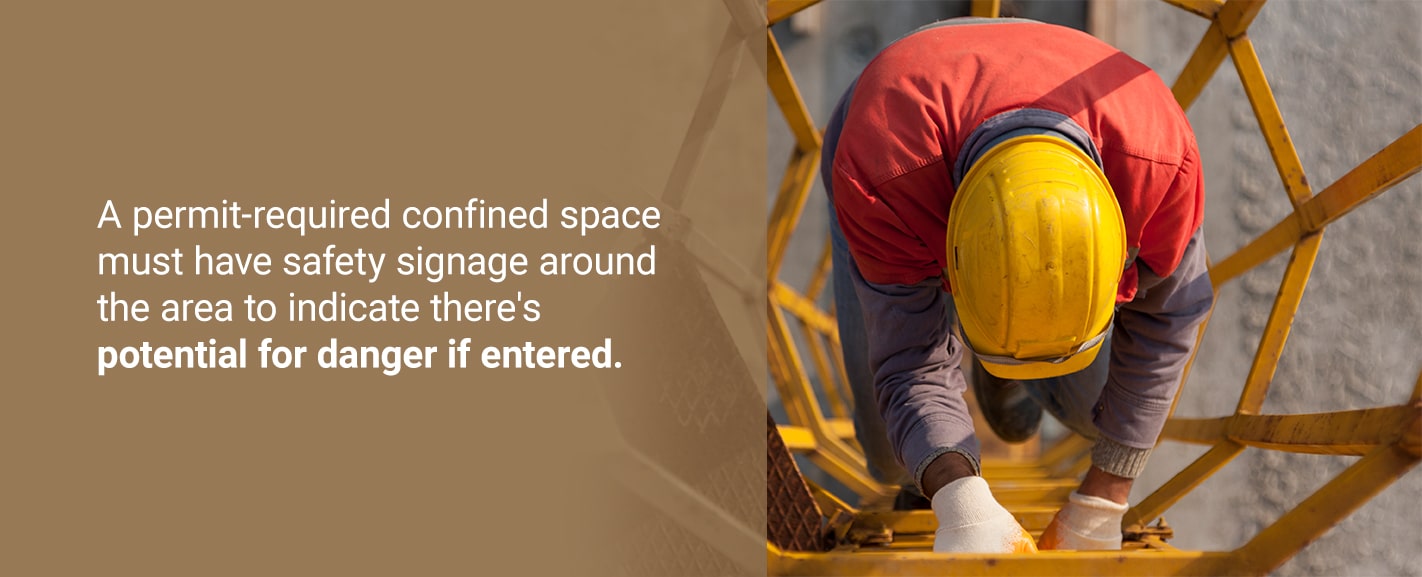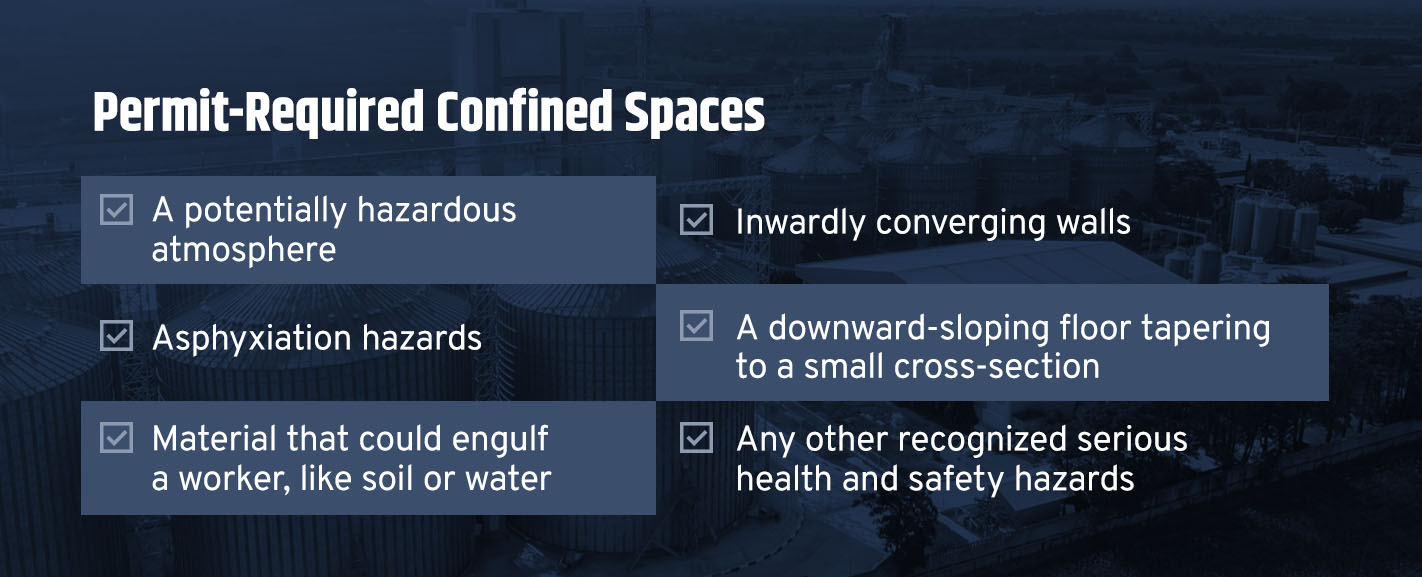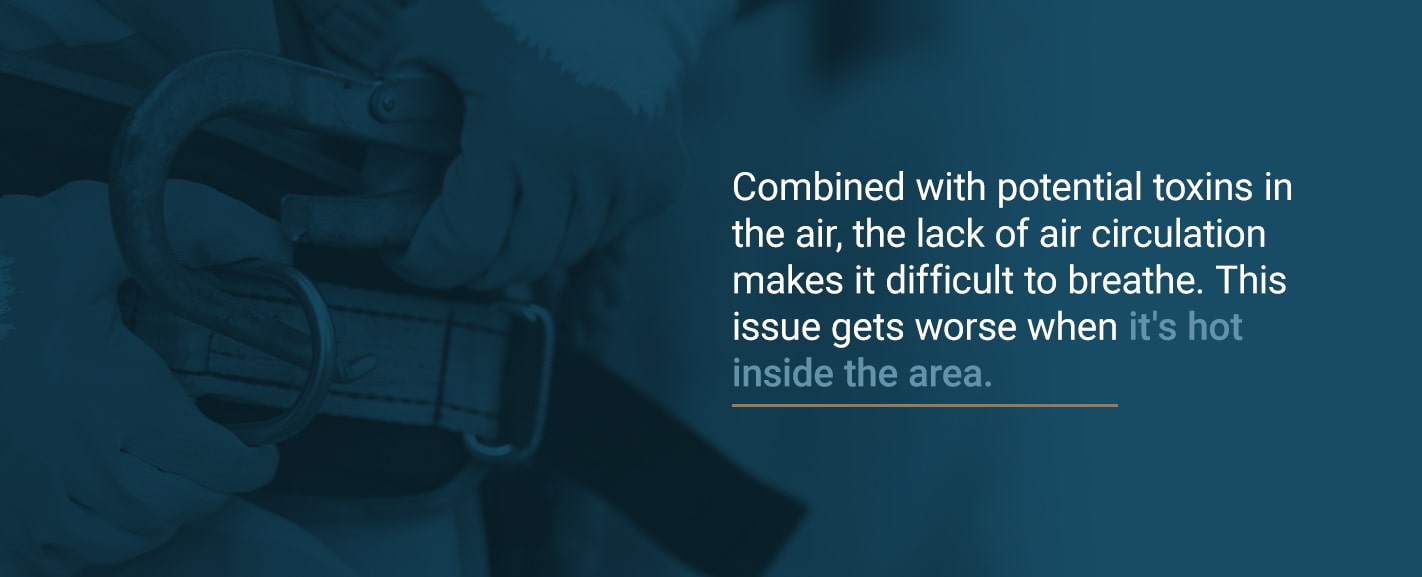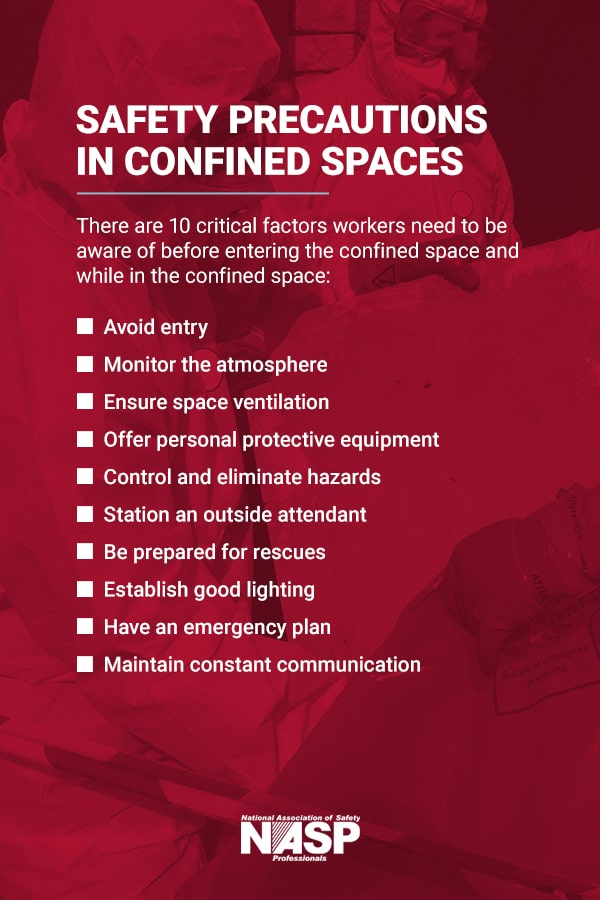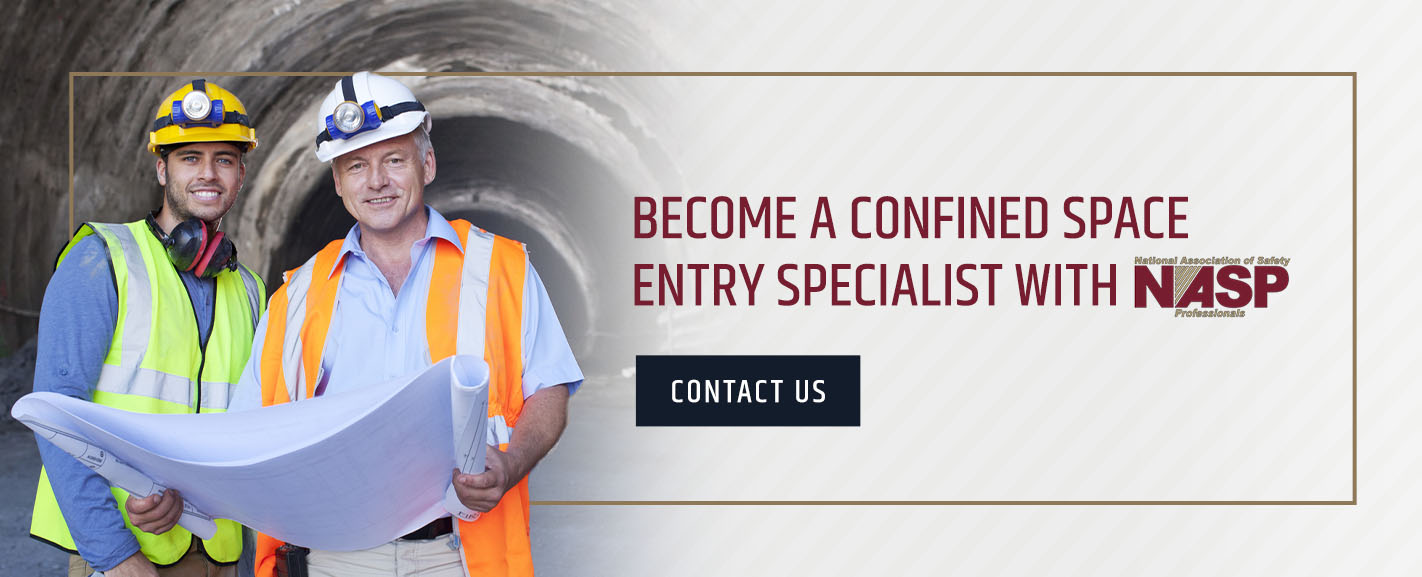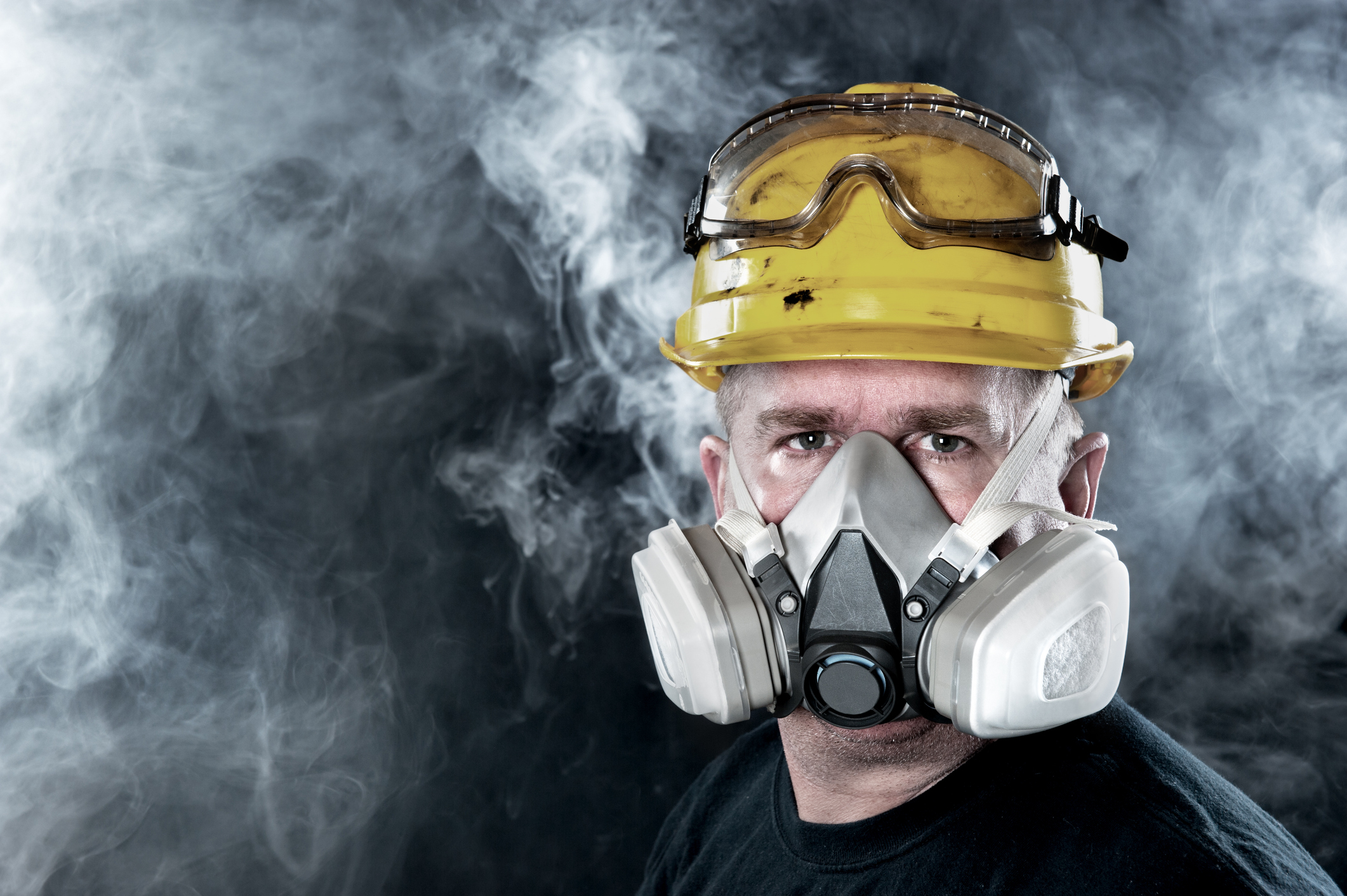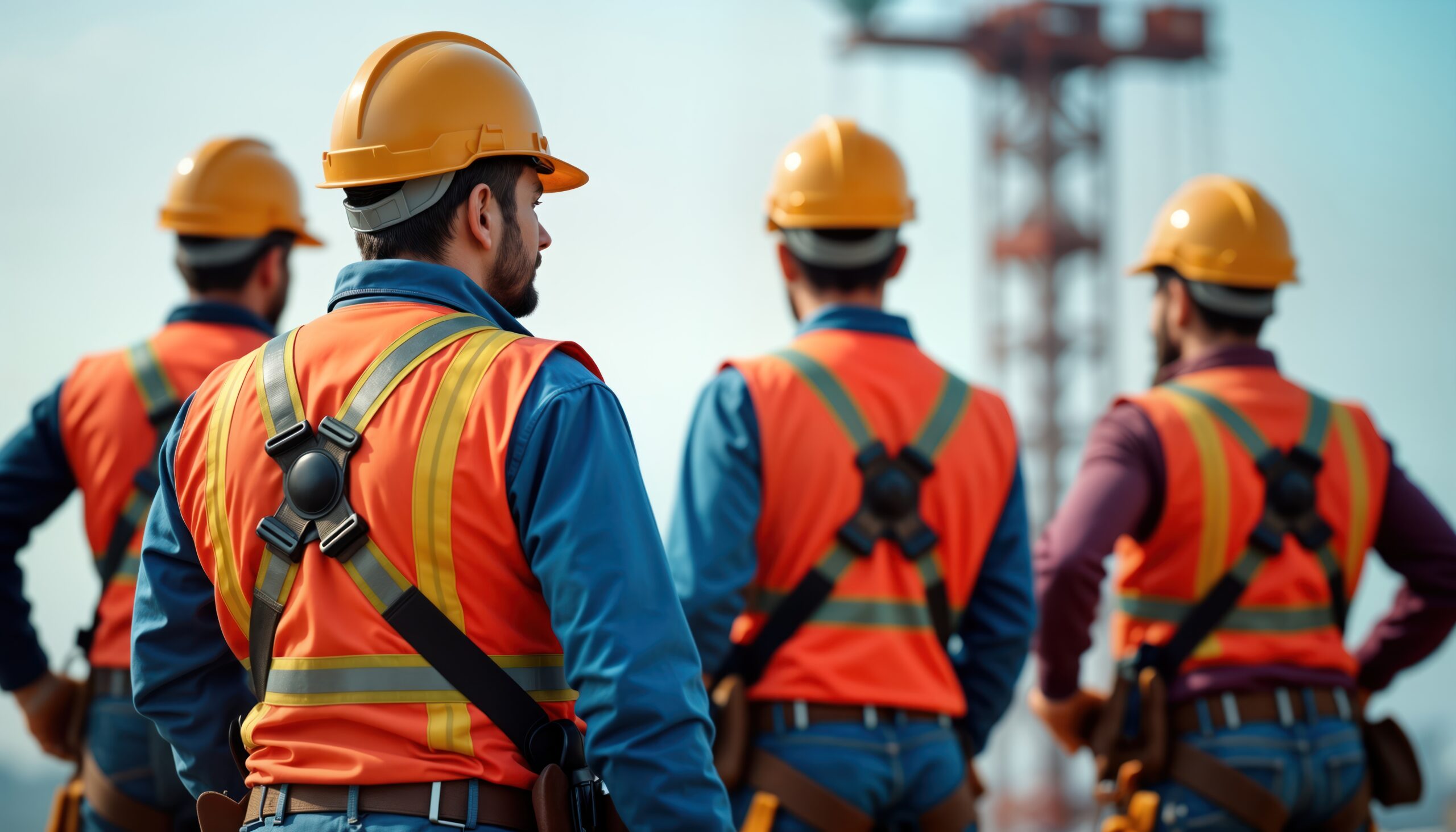Guide to Confined Spaces
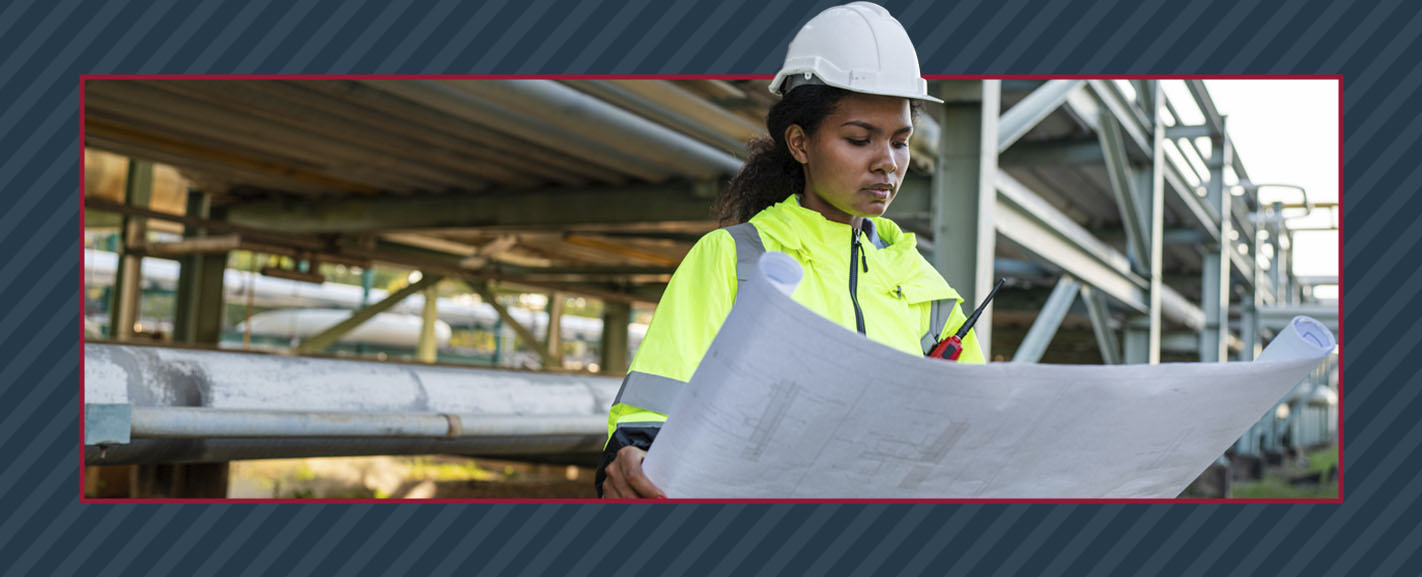
A workplace can feature numerous layouts, from open warehouses with aisles of shelves to offices with rows of cubicles. Many feature confined spaces that may make it difficult for workers to navigate. These areas can be extremely dangerous, with hundreds of injuries and deaths happening in confined spaces every year. As a result, only trained professionals should be working in confined spaces — and training is critical.
Many workplaces feature confined spaces that are difficult for workers to navigate. These areas can be hazardous, with hundreds of workplace injuries and deaths happening in confined spaces every year. Specialized training is critical to worker safety in confined spaces.
Workers and employers need to know the hazards specific to a confined space and ensure they are prepared. Workplace safety depends on understanding confined spaces, observing regulations and preventive measures, and knowing the emergency procedures to follow if an incident occurs.
What Is Considered a Confined Space?
When we think of confined spaces, we often only picture tiny underground areas. However, a confined space is any wholly or partially enclosed space with the following characteristics:
- Restricted or limited means for entry and exit
- Bodily enterable
- Not designed for continuous worker occupancy
A confined space can be located anywhere. While wells and sewers may first come to mind, confined spaces also include:
- Silos
- Vats
- Bins
- Tanks
- Pits
- Tunnels
- Pipelines
- Any other small area where an employee may need to work
Types of Confined Spaces
Confined spaces have different characteristics and regulations. There are three main types of confined spaces in workplaces — permit-required, alternate procedure, and non-permit-required spaces.
Permit-Required Confined Spaces
A permit-required confined space is a confined space with at least one of the following characteristics:
- A potentially hazardous atmosphere
- Asphyxiation hazards
- Material that could engulf a worker, like soil or water
- Inwardly converging walls
- A downward-sloping floor tapering to a small cross-section
- Any other recognized serious health and safety hazards
Permit-required confined spaces must have safety signage to indicate the potential for danger. Employees should see this signage before they enter the confined space. The employer should inform workers of all safety procedures if an accident occurs. Employers with permit-required spaces in their workplaces and intend workers to enter them must have an OSHA-compliant written permit program to give workers controlled access to these spaces.
Alternate Procedure Permit Spaces
An alternate procedure permit-required confined space is one where the only hazards are atmospheric and the employer eliminates these before entry through proper ventilation. Reclassifying a space this way certifies that the employer has eliminated all hazards, so this designation should be made carefully. As long as the employer has met and documented all alternate procedure requirements for this space, workers may access alternate procedure spaces for jobs without completing the usual permit process.
Non-Permit-Required Confined Spaces
On the other hand, non-permit-required confined spaces contain none of the abovementioned serious hazards. These confined spaces don’t require safety signage or attendants, though notifying employees of the confined space is still pertinent. Employers and workers should treat these with caution and have a safety plan in case of accidents because of the inherent risks of space limitations.
NASP has found that it is rare to have a confined space that is non-permit required in nature. The standard does allow for a permit-required space to be reclassified as a non-permit required confined space if all hazards have been eliminated prior to the entry and only for the duration of the entry. This would be allowed if the space contained no atmospheric hazards and only physical hazards such as energy or moving parts that could be eliminated or controlled through isolation of the space.
What Are the Hazards Specific to a Confined Space?
A confined space is an occupational safety and health concern because of the dangers it can pose to workers and rescue teams. Potential hazards specific to a confined space include:
- Toxic atmospheres: Confined spaces can have toxic atmospheres that harm workers. Extended exposure to a poisonous atmosphere may cause impairment of judgment, unconsciousness, or even death. Atmospheric poisons in some confined spaces include carbon monoxide and hydrogen sulfide gases.
- Oxygen deficiency: Many confined spaces lack sufficient oxygen for workers, which is a serious Due to gases, rot, rusting, and other particles in the atmosphere, oxygen deficiency can cause workers to become lightheaded and possibly faint.
- Excess oxygen: Excess oxygen in a confined space is a hazard because it increases the chances of fires or explosions. Purging confined spaces with pure oxygen can lead to disastrous results.
- Fires and explosions: Fires and explosions are possible if a confined space contains a flammable Therefore, flammable liquids, gases, and combustible dust cause a significant fire and explosion hazard. Methane and hydrogen sulfide are common explosive gases that form within confined spaces.
- Excessive heat: Confined spaces are enclosed, increasing the risk of excessive heat exposure. As a result, workers may experience heat stroke, becoming disoriented and unresponsive.
- Biological agents: Workers may be exposed to hazardous biological agents in confined spaces. For example, bacteria found in mold, fungi, fecal matter from animals, or sludge can cause bacterial and viral infections.
- Becoming trapped: Inwardly sloping walls or a tapering bottom can make it difficult for a worker to escape during an emergency. If the only way out of the area becomes blocked or otherwise unavailable, employees can become trapped.
Hazard Controls for Confined Spaces
Solutions to control hazards depend on the nature of the confined space and the type of hazard. For example, fall-prevention measures differ from explosion precautions. Having a strategy for every possible situation is critical.
Here are hazard controls for confined spaces with air quality hazards or fire and explosion risks.
Hazard Controls for Poor Air Quality in Confined Spaces
A confined space may contain a toxic atmosphere, dangerous vapors or unsafe oxygen levels. These atmospheric hazards are common for confined spaces because these spaces often lack proper air circulation or ventilation. To prevent or mitigate air quality hazards, trained professionals must test the air quality within the confined space. They will typically test oxygen first, then flammables, and finally toxics.
To properly test air quality, the trained professional should first test the air inside the confined space before anyone can enter the confined space. The professional should also have the proper detection equipment (typically a 4-gas meter testing oxygen, LEL, and the toxic gases carbon monoxide and hydrogen sulfide) to perform the test and confirm:
- Oxygen levels are within safe limits, between 5% and 23.5% concentration — ideally 20.8%.
- The space is free of atmospheric toxins and flammables.
- The ventilation equipment is operating correctly.
There are two ventilation methods used in confined spaces. The most effective method is mechanical ventilation with blowers, fans, and other tools to maintain air quality. The second ventilation technique is natural ventilation using natural air currents. On many occasions, natural ventilation alone is insufficient to reliably maintain air quality. Both natural and mechanical ventilation should be considered.
Hazard Controls for Fires and Explosions in Confined Spaces
Both fires and explosions can threaten workers in a confined space. To control these hazards, a trained professional should identify all potential ignition sources. A trained professional should identify these sources before the workers begin work in the confined space.
Ignition sources include open flames, sparking of electrical equipment, combustible dust, static electricity, and more. A fire or explosion only occurs in a confined space when oxygen, flammable liquid, and an ignition source are all present. Removing these variables creates a safer work area. Remember, alarms sound at 10% of the lower explosive limit (LEL). This is a prohibited condition and, if it occurs, the worker must leave immediately.
Why Is Working in a Confined Space More Hazardous Than Other Workspaces?
More so than other workspaces, confined spaces can have extremely poor air quality. That’s the most significant hazard. Combined with potential toxins in the air, the lack of air circulation makes it difficult to breathe. This issue gets worse when it’s hot inside the area. If a worker is hurt or trapped, the poor air quality turns rescue operations into an even tighter race against the clock.
Additionally, falls are one of the leading causes of confined space injuries and deaths. While falls also happen in unconfined spaces, they are especially dangerous in confined spaces. For example, a worker could fall to a lower level of a silo or sewer and become trapped. The chances of injury or death are even higher when falls happen together with environmental dangers like water or atmospheric hazards.
What to Do When Preparing to Enter a Confined Space
All workers required to enter a confined space should be prepared before entry. A hazard assessment and control program is required before establishing a confined space. Once the employer has classified a confined space, they must ensure the worker understands this classification and meets safety requirements before entering it.
The next question is whether the work inside the confined space is necessary. Sometimes, employees can do the same work in a safer area. Be sure anyone assigned to work in a confined space needs to be there. If you determine the job can be completed in a safer place, you should always take that route.
After determining the job is necessary, it’s time to take precautions. Confined space work requires at least two categories of workers — entrants and attendants. While the entrants complete the work in the confined space, attendants stand immediately outside the entrance. This means the entrants have someone to alert when an issue arises, and the attendees can prevent unauthorized entry and call in the rescue team if necessary.
Some employers require a separate confined space supervisor and rescue service members to be available in case someone is incapacitated within the space.
Safety Precautions in Confined Spaces
Taking the necessary safety precautions in confined spaces will decrease the chances of injury or death. There are 10 critical factors workers need to be aware of before entering the confined space and while inside it:
- Avoid entry: If a job can be done outside confined spaces, avoiding these spaces is the safest solution.
- Monitor the atmosphere:Most deaths result from atmospheric problems, so monitoring the toxin levels in the confined space’s atmosphere is crucial.
- Ensure space ventilation: Mechanical ventilation can dilute and displace toxins in the air to create a safer environment. Ensure the confined space has the best air quality possible.
- Provide personal protective equipment: Personal protective equipment (PPE) is equipment used to increase an individual’s safety while performing dangerous duties. Using the proper PPE is essential if any hazards can’t be eliminated or controlled. The PPE must be readily available to
- Control or eliminate hazards: Before entry, all hazards should be eliminated or at least controlled. Eliminating the danger is the preferred method. When this is impossible, take precautions to control the threat. For example, sewage treatment tanks have unavoidable engulfment hazards, but employers can reduce the risks through PPE and emergency protocols.
- Station an attendant: A trained worker should always be standing outside the confined space to monitor entrant safety, help in an emergency, and call for backup assistance if necessary.
- Be prepared for rescues: If a rescue is needed, having the equipment and personnel ready and available is critical. The rescue service team should be prepared to dive into action whenever necessary. They must have the equipment and training to handle any hazardous situation. This training is required annually on actual or representative spaces.
- Establish good lighting: Lighting in a confined space is another major safety factor. Performing safer work depends on seeing what’s around you. Additionally, entry and exit points must be well-lit to ensure workers and the rescue team can see during an emergency.
- Have an emergency plan: It’s vital to be prepared with an emergency plan. While emergency prevention should always be a priority, operating in a confined space requires extra attention, because of the seriousness of the potential dangers.
- Maintain communication: Effective communication is crucial to any operation running smoothly. The outside attendee must maintain contact with the workers inside the confined space. At the same time, workers should provide continuous updates to the attendee so they know what’s going on inside.
Become a Confined Space Entry Specialist With NASP
At the National Association of Safety Professionals (NASP), we provide confined space training to prepare your team for safer work in these spaces. Our Confined Space Entry Specialist course helps you understand what is considered a confined space, pre-entry precautions, how to identify, assess, and eliminate hazards, and more. With NASP’s innovative training, safety professionals can meet and exceed OSHA compliance standards for confined spaces.
Prepare your team to work in confined spaces by taking our course today.
Do you oversee a confined space rescue team at your facility? Then you may wish to attend our five-day Confined Space Entry/Rescue Program Manager Course held on the Battleship USS NC that includes four days of intense practical rescue scenarios that will provide you with the knowledge, skills, and abilities to implement an effective rescue team for your organization. For more information on this course, click here now.
Blog Posts
Latest Posts
Related Posts


